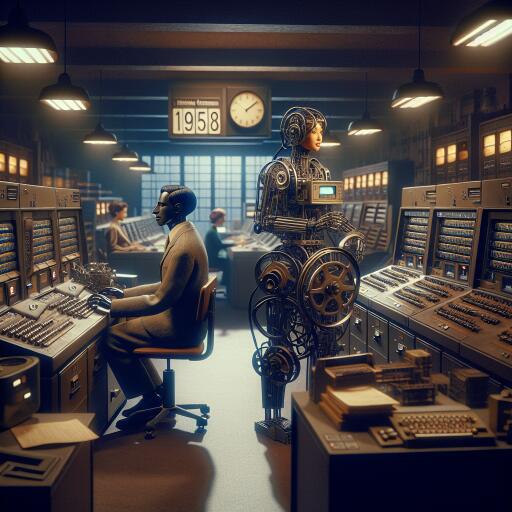We’ve Been Here Before: AI Promised Humanlike Machines – In 1958
Over sixty years on, we’re witnessing eerily similar proclamations about the capabilities of contemporary artificial intelligence. But how much has really changed since 1958?
In many ways, it feels like we’ve barely moved. The realm of artificial intelligence has historically cycled through periods of intense hype followed by sobering disappointment. Amidst the current surge of enthusiasm, it appears many have overlooked the lessons taught by failures of the past. While optimism is a key driver of innovation, it’s crucial to remember the historical context of AI.
The story begins with the Perceptron, an invention by Frank Rosenblatt that is often considered the precursor to modern AI. This early version of a learning machine, an electronic analog computer, was designed to classify images into one of two categories. It was a network of connected wires, mimicking what we know today as artificial neural networks—albeit on a much simpler scale. These networks, which power AI systems like ChatGPT and DALL-E, have evolved to include exponentially more layers, nodes, and connections than Rosenblatt’s original creation.
Modern AI functions on a similar principle: learn from mistakes to improve future predictions. This methodology underlies the operation of large language models (LLMs) that can generate complex text responses and create images from textual prompts, improving as they process more data.
AI Boom and Bust
In the years following the debut of the Mark I Perceptron, there were bold predictions, such as those from Marvin Minsky, envisioning machines with the intelligence of the average human by the late 1970s. Yet, those aspirations remained unfulfilled, largely because AI systems lacked an understanding of the context and nuances of human language. This realization led to the first AI “winter,” a period of disillusionment that began in 1974.
The cycle resumed in the 1980s with the emergence of expert systems, leading to a surge in AI development. These systems showed promise in diagnosing diseases and identifying objects, among other things. However, the excitement was short-lived as these systems struggled to adapt to new, unseen information, ushering in the second AI winter in 1987.
The 1990s brought a pivotal change in approach, favoring data-driven machine learning techniques. This shift, coupled with advancements in digital technology and computing power, breathed new life into the field and set the stage for the AI capabilities we see today.
Familiar Refrains
Today’s confidence in AI mirrors the optimism of the past. Terms like “artificial general intelligence” (AGI) describe LLMs capable of human-equivalent intelligence. Despite comparisons to the groundbreaking Perceptron, contemporary AI faces the same old challenges, particularly in understanding and contextualizing human language.
For instance, AI systems like ChatGPT still falter with idioms, metaphors, and sarcasm. Similarly, while AI can accurately identify objects in many cases, it can be easily misled by uncommon scenarios, mistaking a sideways school bus for a snowplow with high confidence.
Lessons to Heed
The challenges of the past still haunt today’s AI advancements. Artificial neural networks might now be more complex and efficient, but the foundational issues of understanding and contextual knowledge remain. This recurring theme serves as a reminder: while history might not repeat itself exactly, it often rhymes.
As we stand on the brink of what many consider a new era in artificial intelligence, it’s crucial to remember the cyclical nature of AI’s progress. Recognizing and addressing the enduring challenges is essential for moving beyond the repetitive hype cycles and making sustainable advances in creating truly intelligent machines.










